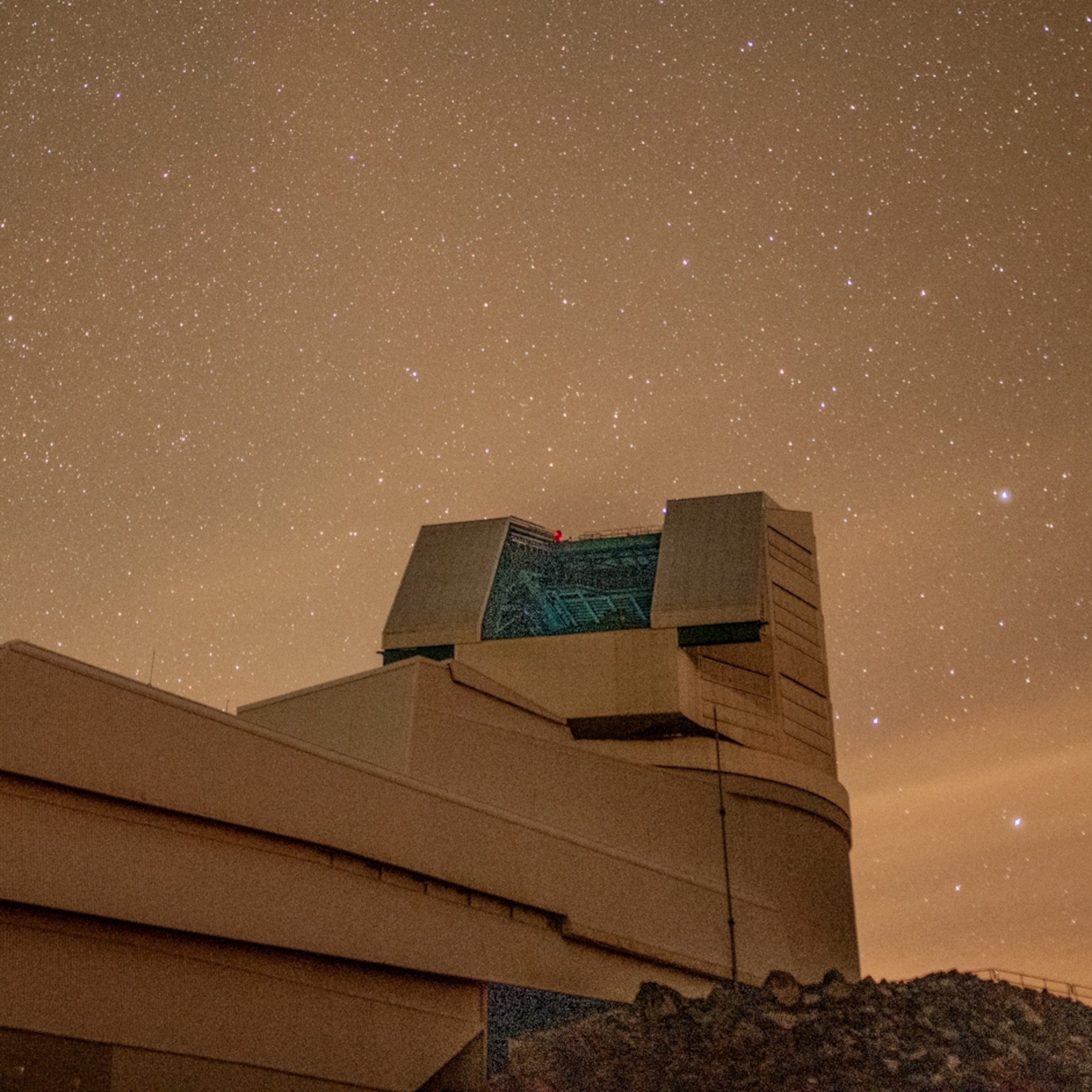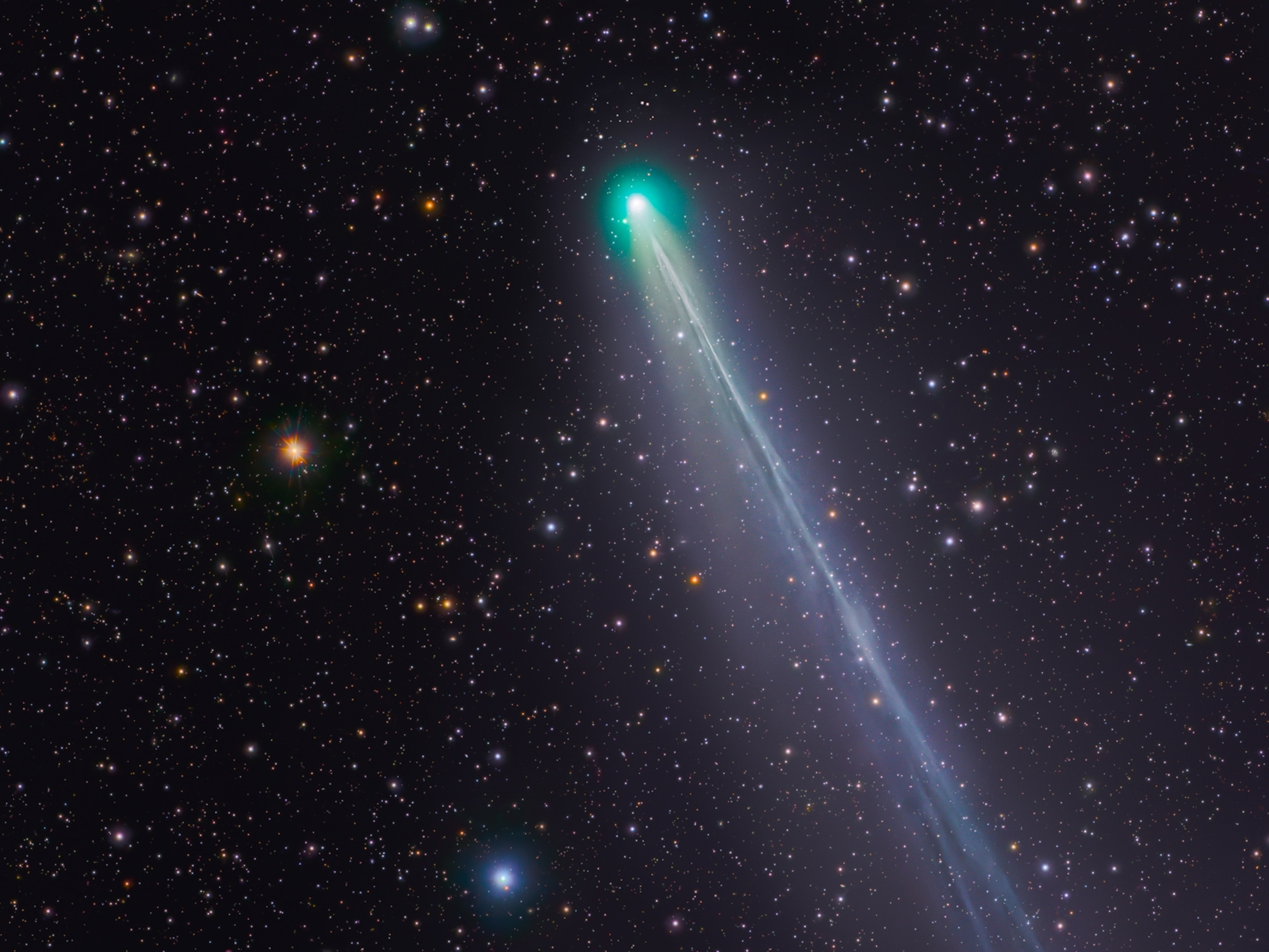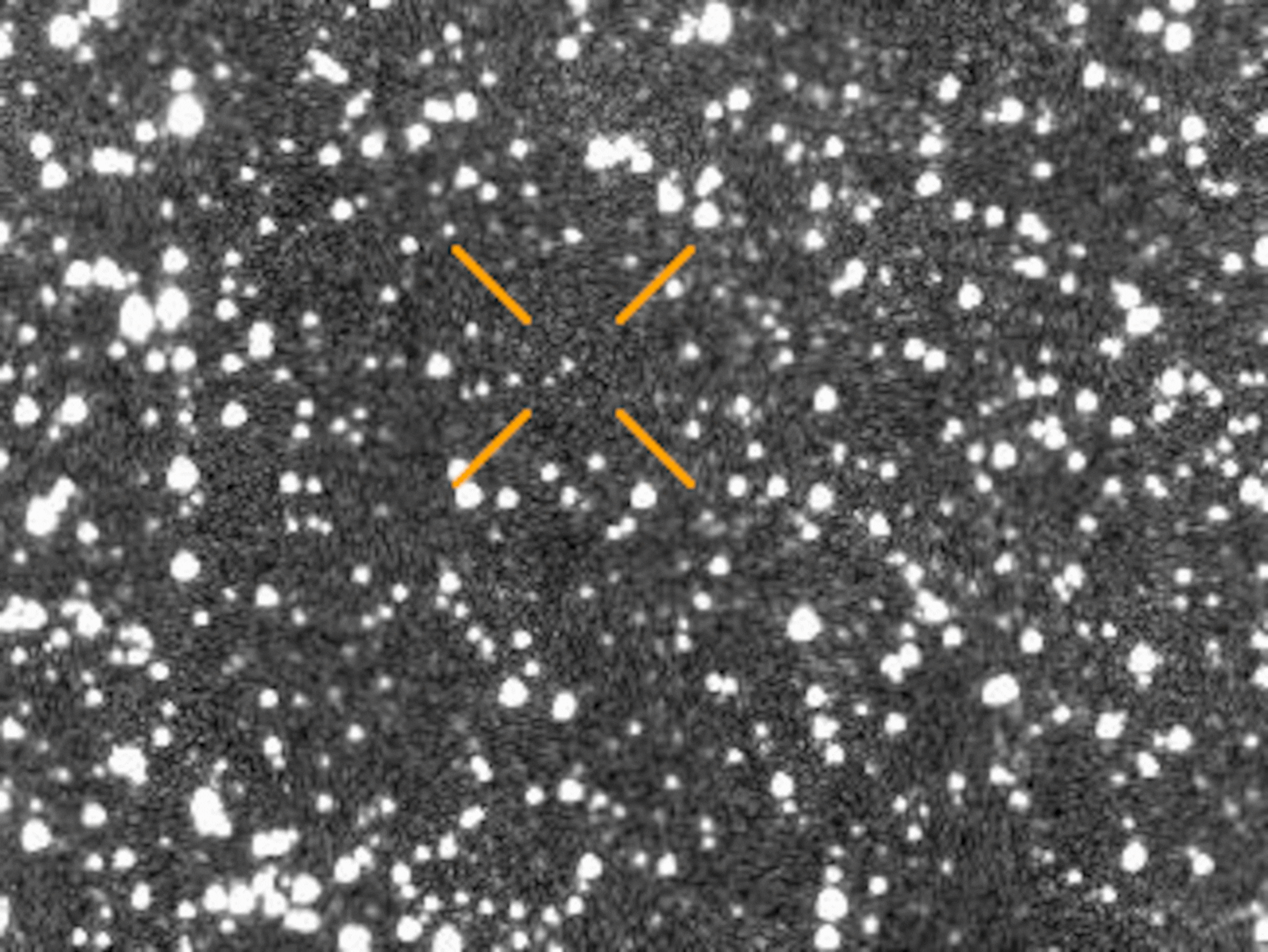We caught a view of an interstellar comet from Mars
NASA released new images of 3I/ATLAS as it plunged towards the sun, captured by a host of the agency’s robots and probes.

Ever since the interstellar object 3I/ATLAS—the third of its kind ever discovered—was first spotted back in July, astronomers around the world have avidly tracked it, watching it transform from an ice ball into a bright luminous body as it plunged toward the sun.
But NASA has not commented on the interstellar object or shared any images of it for over a month, due to the longest government shutdown in U.S. history. This silence has been filled with unfounded (and usually zany) ideas about the object’s nature by celebrities and conspiracy theorists alike—many of which have speculated, without evidence, that it might be an alien spacecraft.
With the shutdown now over, the space agency was finally able to share its latest shots of the icy interloper at a press conference this week. In short: it’s not alien technology.
“We think the universe is a magical place,” said NASA Associate Administrator Amit Kshatriya during the press conference. “We want very much to find signs of life in the universe.” But, he added: “3I/ATLAS is a comet.”
Still, 3I/ATLAS is a bit of a weirdo—and gives us a spectacularly rare chance to study the remnants of a truly ancient corner of the galaxy.
“We’re just beginning to learn about these types of objects and figure out what are the right questions we should ask about them,” said Tom Statler, lead scientist for solar system small bodies at NASA headquarters, at the presser. 3I/ATLAS, he added, “is a new window into the makeups and histories of other solar systems.”

(Our solar system has a new mysterious visitor. What is it?)
Catching sight of 3I/ATLAS from Mars
Several weeks before the interstellar comet made its closest approach to the Sun (which finally occurred on October 30th), it passed by Mars at a cosmically close distance of 19 million miles. That put it in sight of three robots that weren’t designed to turn their gaze to the stars: the Mars Reconnaissance Orbiter (MRO), which is making a photographic survey of the ochre planet below; the Mars Atmosphere and Volatile EvolutioN orbiter (MAVEN), which is examining the world’s upper atmosphere; and NASA’s Perseverance rover, which is scooting about to locate promising signs of ancient life.
Perseverance gazed upward and caught sight of the comet as a blurry smudge on one of its cameras—an unusual achievement, but not particularly helpful to scientists. MAVEN, being in orbit around Mars, fared a lot better: using an ultraviolet filter, it documented the puffy nature of the comet’s coma—a gassy, dusty atmosphere sustained by vaporizing icy matter.
“All of these observations are very, very difficult,” said Statler.
Scientists hope to use MAVEN’s data to better understand 3I/ATLAS’s composition—which, in turn, offers clues about its origins. The orbiter is able to capture ultraviolet light, which can help identify the types of molecules being thrown off the comet. “The images MAVEN captured truly are incredible,” said Shannon Curry, MAVEN’s principal investigator at the University of Colorado Boulder, in a statement.
(Are interstellar objects proof of alien life?)
Meanwhile, a high-resolution camera aboard MRO captured a spooky monochrome shot of the comet, one showcasing its expansive coma and the diffuse nature of its dusty tail.

Unaffected by the U.S. shutdown, the European Space Agency had a chance to share their own photography of 3I/ATLAS back in October. A series of images taken by their ExoMars Trace Gas Orbiter spacecraft depicts the comet blazing silently through the night sky.
Although the object was still too faint at that point to learn much about its composition, the Trace Gas Orbiter was able to track 3I/ATLAS for about a week. This allowed astronomers to plot out the interstellar object’s path through the solar system with an unprecedented degree of precision—meaning it’s now easier for them to work out exactly where to point their telescopes to follow the comet’s path.
Space-based spies detect 3I/ATLAS
NASA also has several uncrewed planetary missions making their way through the solar system—and two of them were able to peer back and see 3I/ATLAS as a shimmering speck. Psyche (which is journeying to a metallic asteroid), and Lucy (which is on a tour of several asteroids close to Jupiter) spied the comet in September, allowing scientists to further improve their knowledge of the object’s trajectory.
A key problem for astronomers was that the comet made its closest approach to the Sun at an awkward angle: from Earth’s point of view, it dipped behind our local star, obscuring it from view when it would naturally reach its most effervescent point.
Fortunately, three deep space missions designed to study the Sun itself managed to track 3I/ATLAS as it swooped behind the star: NASA’s Polarimeter to Unify the Corona and Heliosphere (PUNCH) probe, NASA’s Solar Terrestrial Relations Observatory (STEREO) spacecraft, and the joint ESA-NASA Solar and Heliospheric Observatory (SOHO) mission.
(The difference between asteroids and comets)
Although the comet is luminous, the Sun is considerably brighter, and there were some worries that these spacecraft wouldn’t be able to see 3I/ATLAS in the glow. But its dive behind the Sun vaporized such a tremendous amount of its ice that it showed up as a hazy firework-like burst.
3I/ATLAS is now on its outward journey from the solar system, but there’s still plenty of time for astronomers to study it during its exodus.
As it fades from view, the very last observatory that will be able to see 3I/ATLAS will be the James Webb Space Telescope. “I’m really excited about tracking it to the very end,” said Nicky Fox, the Associate Administrator for NASA’s Science Mission Directorate.








